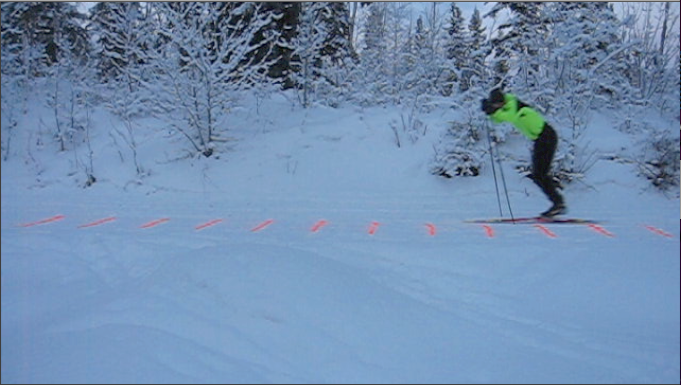In this experiment I was examined the vector physics of the classic style of cross-country skiing. Unfortunately, due to problems with the weather and time crunches I was unable to delve as deep as I would have liked into the topic. I had originally intended on doing several tests on both classic striding and double poling, but was only able to conduct a single test on double poling.
As a competitive cross-country skier I have done a lot of work with double poling technique. When planting the poles the fastest the fastest position to be in is to have the poles as vertical as possible and to have the skiers weight as far over them as possible (Leonard). I know this is the fastest way to double pole, but it seems a little counterintuitive. If the desired direction of motion is forward it would seem that the poles should create as small an angle as possible with the snow.
To try and unearth why this is not so, I looked to the physics. In physics there is something called a vector. A vector has both a magnitude and a directions (Knight). The force a skier puts on the poles can be described as a vector. How hard they push is the magnitude, what direction that push is going is the direction. Vectors can be split up into the amount of push that is going in the x direction and the y direction. This means that as long as the skier plants the poles with an angle that is less than 90 there will be some force that is pushing them down the trail.
Because of these physics I speculated that planting the poles exactly 90 degrees would not be beneficial. I also theorized that a larger angle is faster because the skier is able to apply a much larger magnitude of force to the poles, which would out weight the reduction of the push in the x direction.
I chose to test this theory by first marking a ski trail every two feet for 40 feet with orange spray. I then video taped myself skiing past these lines using a double pole technique similar to what I would do in a race and then using a technique with a much smaller angle of the poles to the snow. I repeated each one three times, alternating between the two to get a more accurate result. When conducting these test I made sure to do them at my max speed, to try and eliminate errors from differing efforts. The videos were then analyzed to determine speed. Inside I then measured the force exerted on the poles during both of these motions using a force sensor and a data logger and graphed the results.

To view the results of this experiment see the double poling section.
